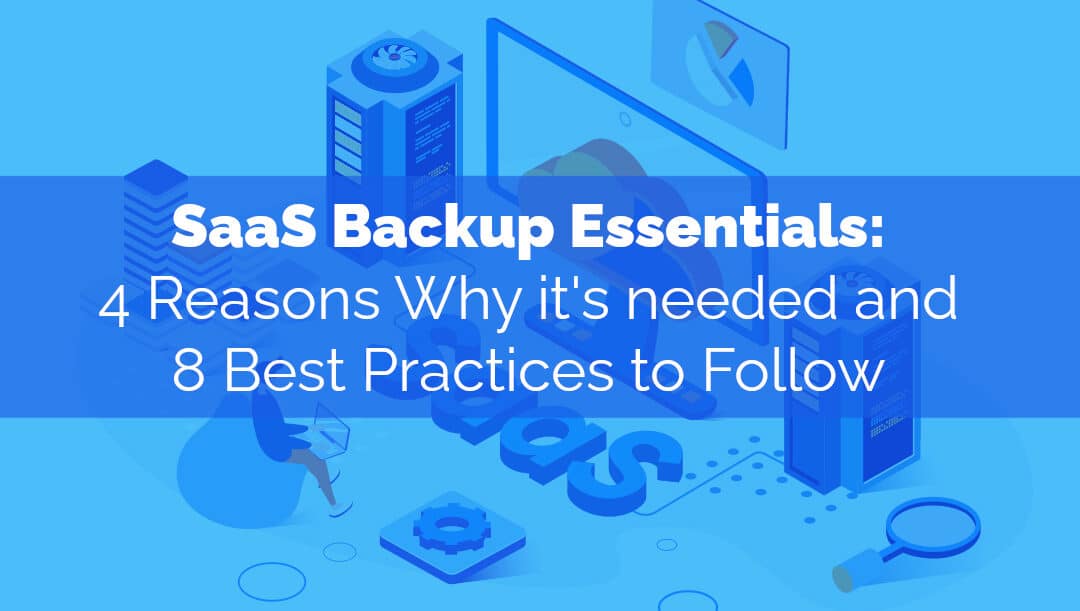SaaS Data Backup: Securing Your Cloud-Based Business Essentials
Introduction:
Are you under the impression that using a SaaS (Software as a Service) provider eliminates the need for data backup? You’re not alone. Many businesses, including those using services like Microsoft Office 365 or Salesforce, lack SaaS backup and disaster recovery measures. The false sense of security provided by SaaS platforms and misconceptions about third-party backup services contribute to this vulnerability. In this guide, we’ll unravel the critical importance of SaaS backup and how it safeguards your cloud-based data.
Understanding SaaS in Cloud Computing:
Before diving into SaaS backup, let’s clarify what SaaS and cloud computing entail.
SaaS, one of three cloud service models, offers software directly to end-users over the internet, eliminating the need for local installations. Popular examples include Microsoft 365, Salesforce, Dropbox, and Google Workspace.
What is SaaS Backup?
SaaS backup software protects data generated by SaaS products, which are cloud-based software offered by third-party vendors. It stores this data in a secondary location, ensuring data recovery in case of SaaS platform failures or data loss incidents.
How SaaS Providers Handle Backup:
Misconceptions often arise from how SaaS providers manage data. While they ensure system-wide redundancy and backup to prevent downtime and system failures, they don’t handle granular data backup, such as individual file recovery.
Why Businesses Need SaaS Backup:
Moving your operations to the cloud brings many benefits, but it also presents data protection challenges. Understanding why you need SaaS backup is crucial:
- Transition Challenges: Moving to the cloud requires careful planning, including data protection strategies.
- Loss of Control: Unlike on-premises solutions, cloud services limit your ability to manage data directly.
- Data Vulnerabilities: Various factors, including human error, illegitimate deletion requests, sync errors, and security threats, put your data at risk.
- Compliance Obligations: Industry-specific compliance standards remain your responsibility even after migrating to the cloud.
Best Practices for SaaS Data Backup:
To ensure comprehensive data protection, follow these best practices:
- Understand Provider Responsibilities: Clarify what your SaaS provider covers and invest in additional data protection where needed.
- Implement Third-Party Backup: Select a reliable SaaS backup solution tailored to your requirements.
- Prioritize Training: Minimize data loss due to human error through employee training and knowledge transfer.
- Set Data Access Policies: Define access levels to enhance security and minimize risks.
- Automate Backups: Opt for automated backups to avoid manual errors and ensure regular data protection.
- Test Your Restore Process: Verify your ability to recover data quickly in case of incidents.
- Involve App Admins: Collaborate between IT and business application owners to determine backup responsibilities.
- Ensure Compliance: Comply with industry regulations and choose a SaaS backup solution that meets these standards.
Benefits of SaaS Backup:
Besides data protection, SaaS backup offers several advantages:
- Compliance Assurance: Ensures adherence to compliance standards, reducing regulatory risks.
- Seamless Onboarding and Offboarding: Safely manage data when employees join or leave your organization.
- Data Quality Improvement: Identify and rectify data issues during regular backups.
- Faster Data Restoration: Recover data quickly compared to relying solely on SaaS providers.
- Granular Restoration: Restore specific data instead of entire datasets.
- Eliminate Dumpster Diving: Avoid the hassle of sifting through deleted items that SaaS providers may not retain.
Selecting the Right SaaS Backup Solution:
When choosing a SaaS backup solution, consider these critical factors:
- Features and Compatibility: Ensure the solution aligns with your SaaS platforms and provides essential features.
- RTO and RPO Capabilities: Evaluate recovery time and data point objectives based on your SLA.
- Return to Normalcy: Verify that the solution restores data to its original state.
- Security and Compliance: Assess where your data is stored and compliance with data-centric regulations.
- Granular Backup and Recovery: Prioritize solutions that allow for precise data restoration.
- Cost-Effective Licensing: Choose a flexible licensing model that suits your budget.
Conclusion:
In the era of data-centric business operations, protecting your cloud-based essentials is paramount. SaaS backup serves as your insurance policy against data loss, ensuring business continuity and regulatory compliance. While the cloud offers many benefits, safeguarding your data through reliable backup solutions remains a non-negotiable aspect of modern business operations.
Ain't Nobody Got Time for All That!
Heard. We understand the time-consuming complexities in navigating the various SaaS backup shared responsibility models. It can be daunting when you’re using 10+ cloud apps to run your business. But don’t let that stop you! Take action today to ensure your SaaS cloud data is fully backed up and secure.

